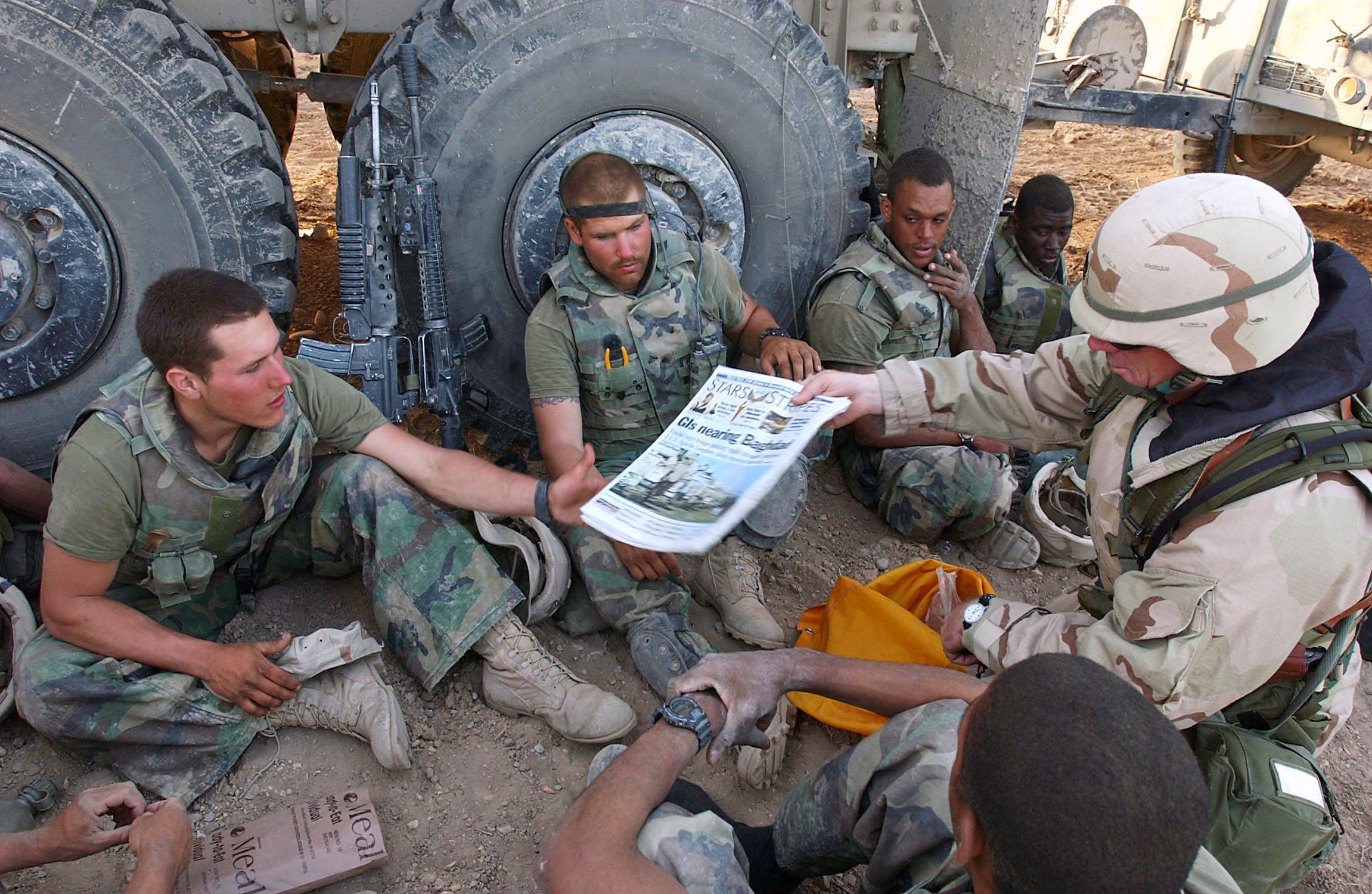
Eric Campbell was a young Marine when he first deployed to Japan in the late 1990s.
“You’re in a foreign country. You don’t speak the language. No one can understand you. And you needed a lifeline,” he recalled.
He found that lifeline in Stars and Stripes, the long-running military newspaper that was first published during the Civil War. It was a little piece of home that gave him the news he needed.
Campbell may have left the Marine Corps, but he was still upset when he learned the Pentagon was planning on closing the paper. The Pentagon zeroed out funding for the news source in its proposed budget in February. Earlier this month, it issued a memo preparing to shut the paper for good.
The response from military members, and even members of Congress, was swift and strong.
“It’s something that’s deeply personal to me,” said Colorado Congressman Jason Crow. The Army veteran also read the paper during his deployments.
Crow joined a letter with nine other House members to Defense Secretary Mark Esper urging that the paper stay open. In the Senate, a bipartisan group of 15 senators did the same. And this summer, the House passed a defense spending bill that included funding for the news organization.
While the budget is still not finalized yet, Crow said “it's certainly a victory that we were able to get this decision reversed and we’re going to continue to advocate for it in the years ahead.”
But more than that Congressional pressure, if anything ensured the paper’s future — at least for the next fiscal year — it was a tweet from President Donald Trump. He wrote funding for Stars and Stripes would not be cut “under my watch.” This was over a weekend where news organizations were reporting that the President had made disparaging remarks about fallen soldiers.
Whatever the reason for the last-minute save, Ernie Gates, ombudsman for Stars and Stripes, is cautiously optimistic.
“I think Congress still has to act on the budget. And I believe that’s going to happen after the election. No sooner,” he said.
After the president’s Tweet, the Pentagon said it would issue a new memo — one that rescinds the memo calling for the paper’s closure. But this doesn’t mean the paper’s future is assured. It's been on the chopping block in previous administrations, too.
Gates thinks the less-than-friendly relations between the Trump administration and the media made it easy for the Pentagon to try to shut down the editorially independent paper this year.
“I think they were emboldened enough to say this is our chance to get rid of this. Let’s take it,” he said.
Gates and others point out that the budget for the paper is minuscule compared to overall defense spending — $15.5 million in the roughly $740 billion budget. That said, Esper had argued that money could be better spent elsewhere.
The paper is operated through the Pentagon’s Defense Media Activity, which is overseen by the Assistant to the Secretary of Defense for Public Affairs.
Stars and Stripes publisher Max Lederer thinks this reprieve from the chopping block is a good time to focus on the Stripe's future.
“How should it be funded?” Lederer asked.
And more importantly, he said now is the time to discuss who in the Pentagon should actually oversee operations of the paper.
“Should it be the public affairs community — like today — or should it be really part of the morale and welfare entity of DOD?”
Moving the paper to a different office in the Pentagon might be one way to defuse the inherent tension between the independent news organization and its operational manager, which controls Defense messaging and oftentimes has to answer tough questions from Stars and Stripes reporters.
For readers, many see the paper as a benefit for service members and their families.
While the internet has made news on all topics more easily available to service members, what hasn’t changed is the Stars and Stripes focus on stories that affect members of the military and their families specifically. That’s what Chelsa Brilla, a military spouse of 15 years, appreciates about the paper.
“I really liked that it went in-depth into the things that made my life different from everyone else’s,” Brilla said.
That could be little things like different PT schedules for her husband to big things like changes to TriCare, the military health insurance, or the temporary payroll tax deferment. Major media outlets might mention this type of news in passing, but Brilla said she knows Stars and Stripes will follow it closely and in-depth.
As Lederer put it, the paper is about telling servicemembers and their families “what's happening on their left flank, right flank and behind them.”
This story was produced by the American Homefront Project, a public media collaboration that reports on American military life and veterans. Funding comes from the Corporation for Public Broadcasting.









